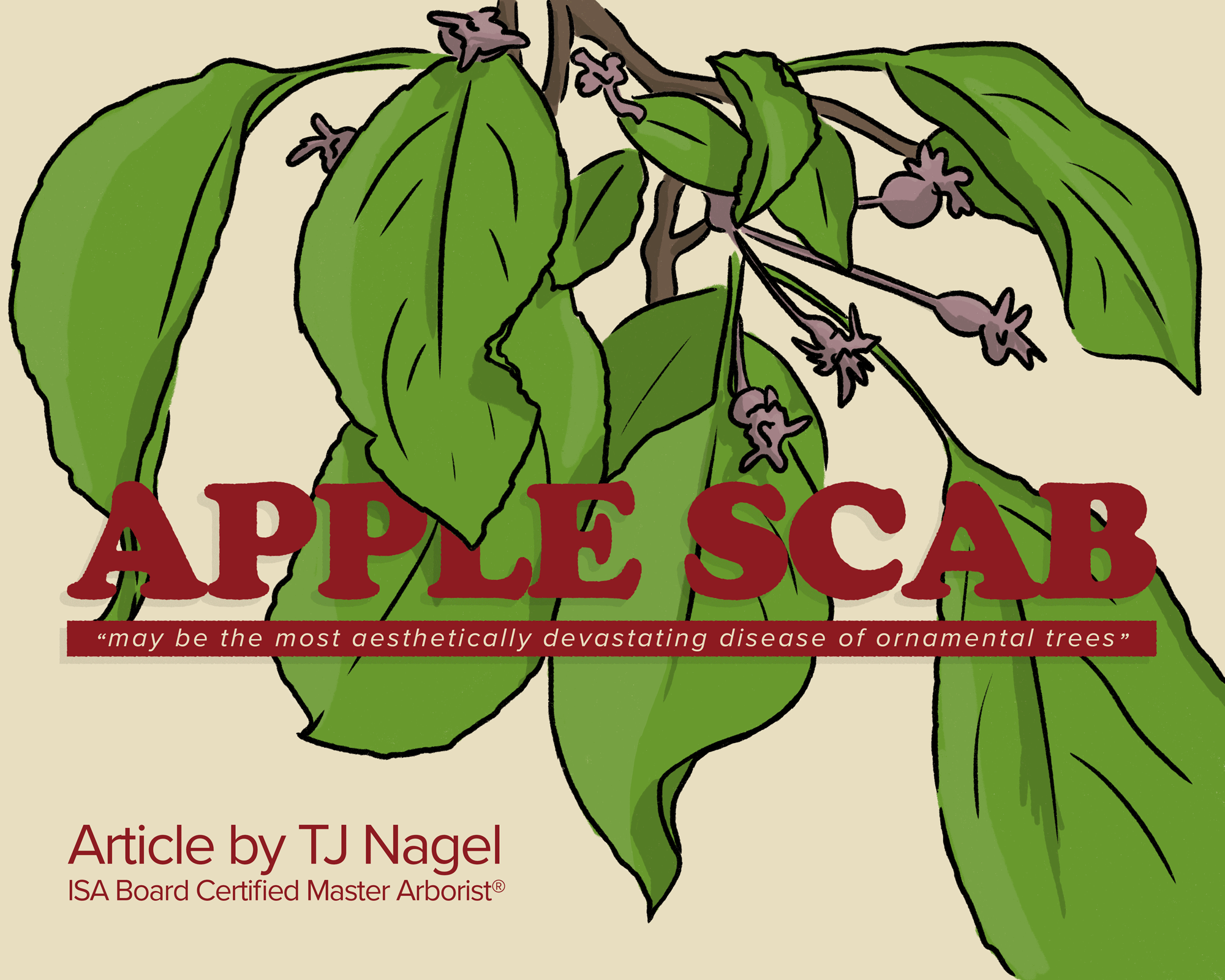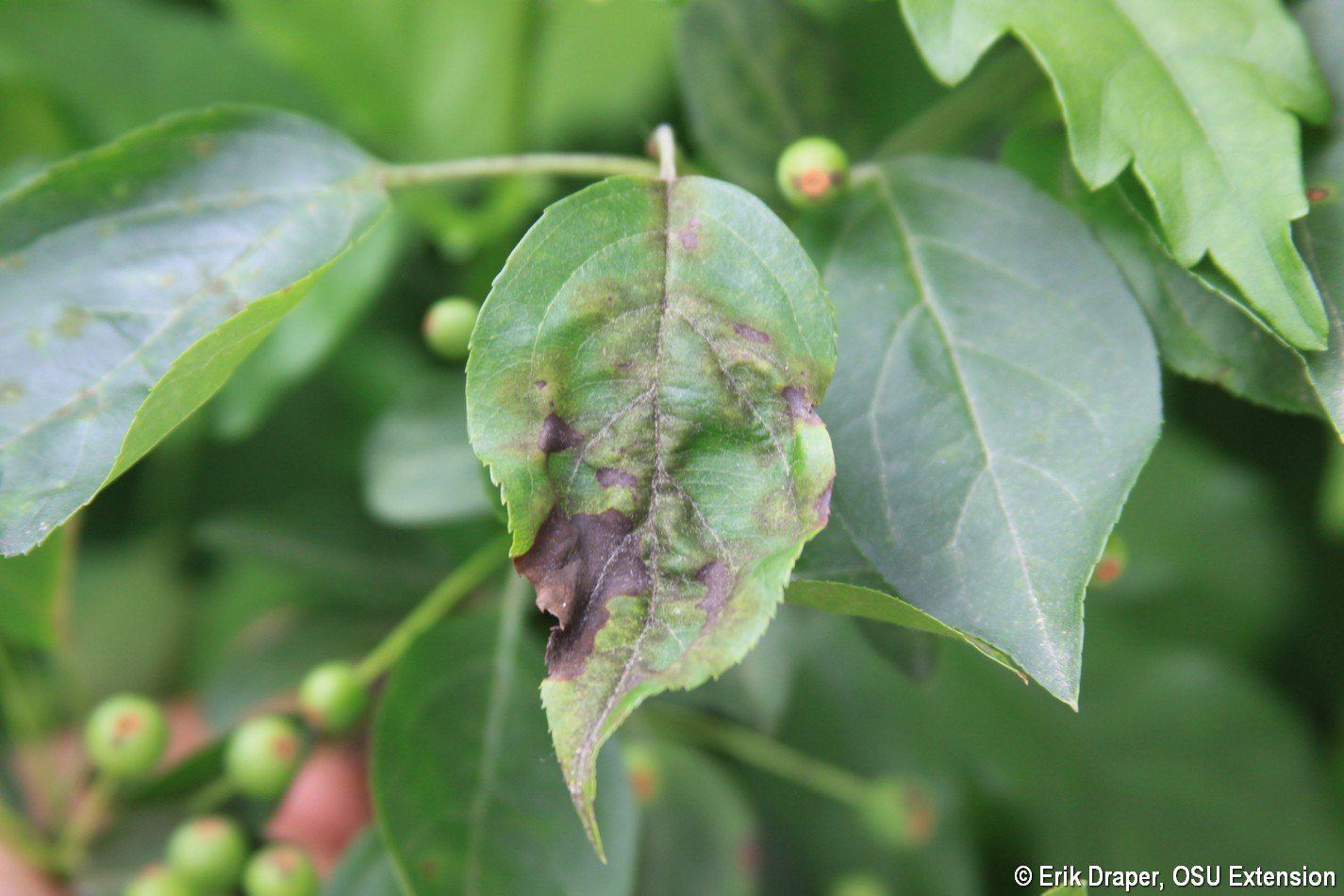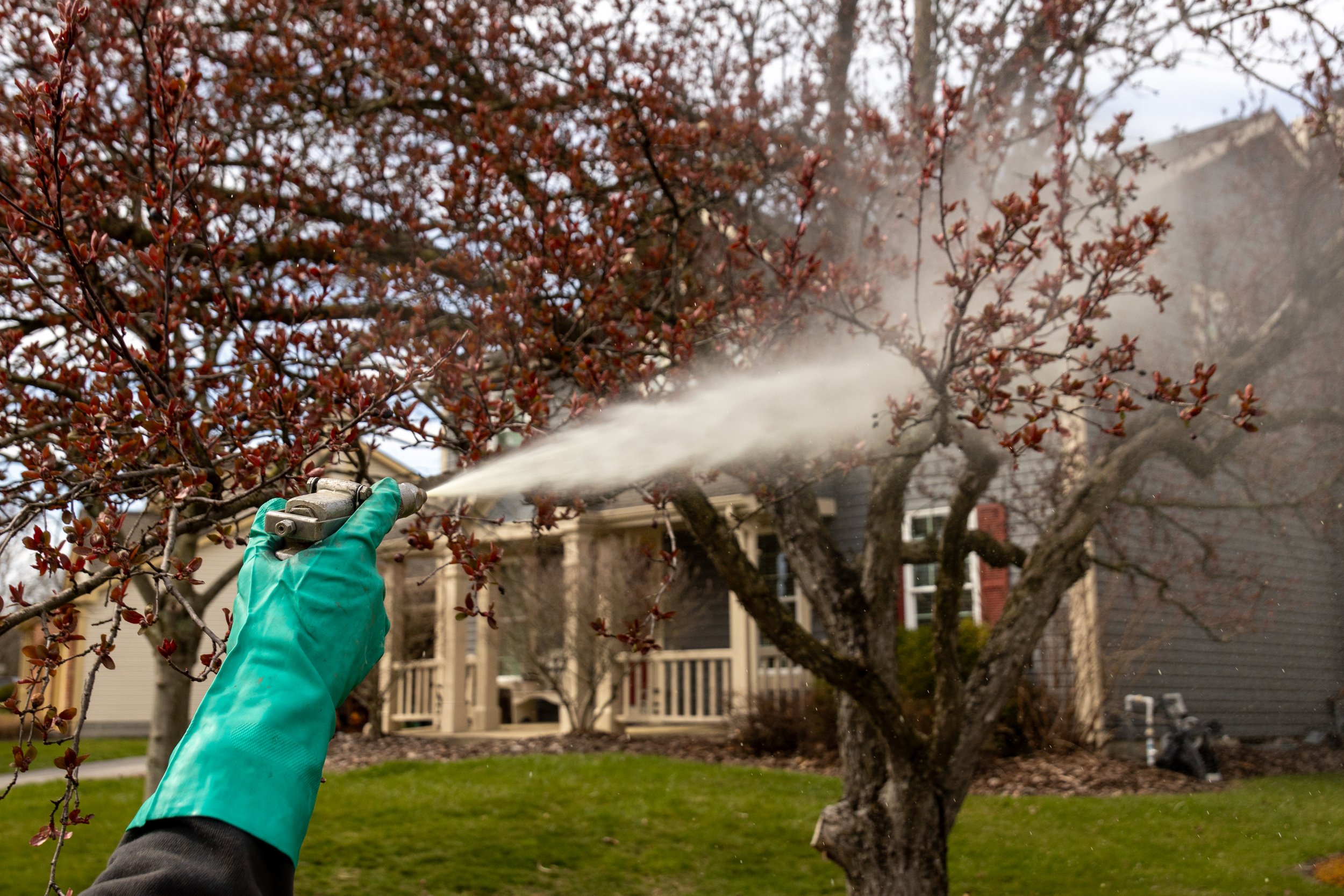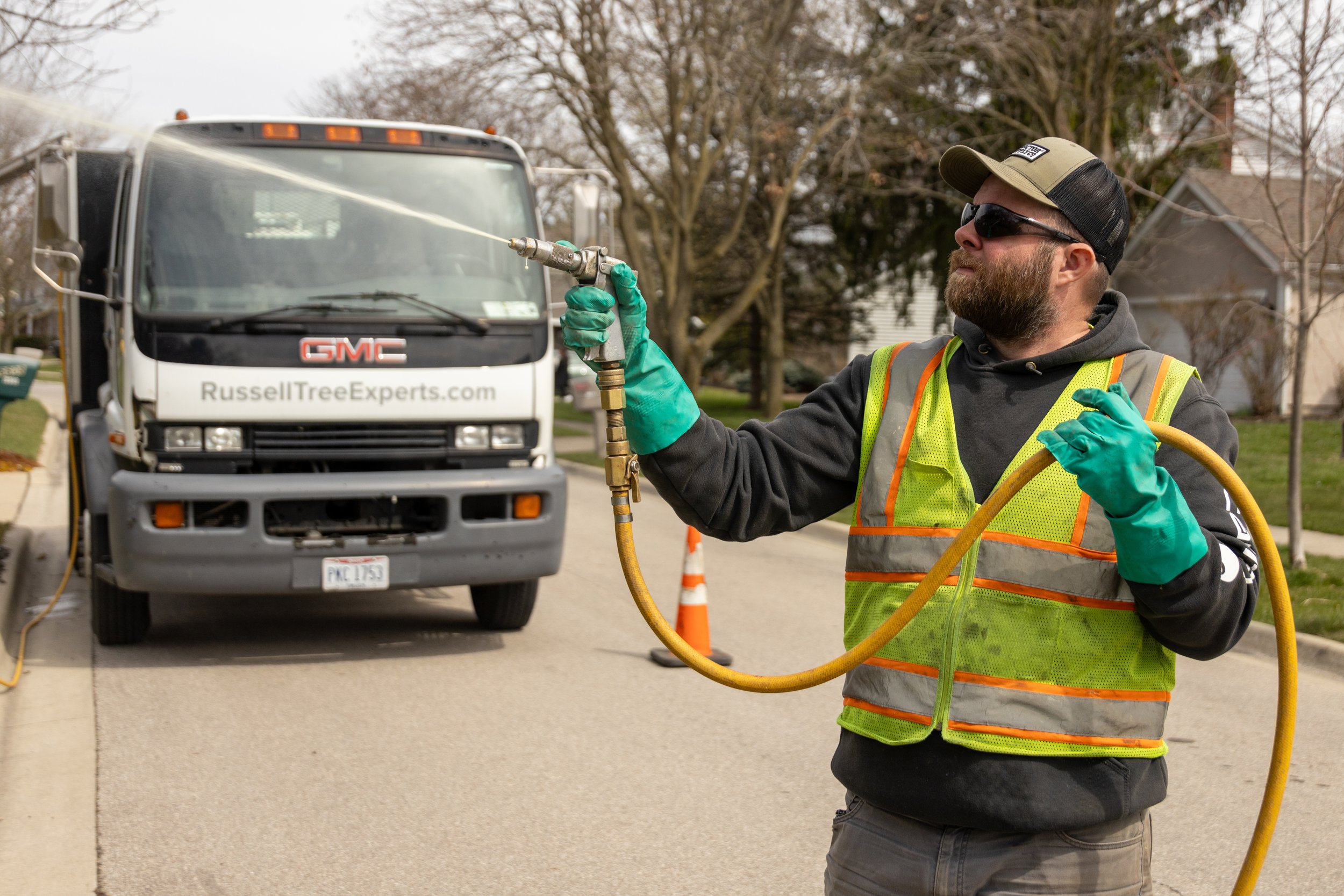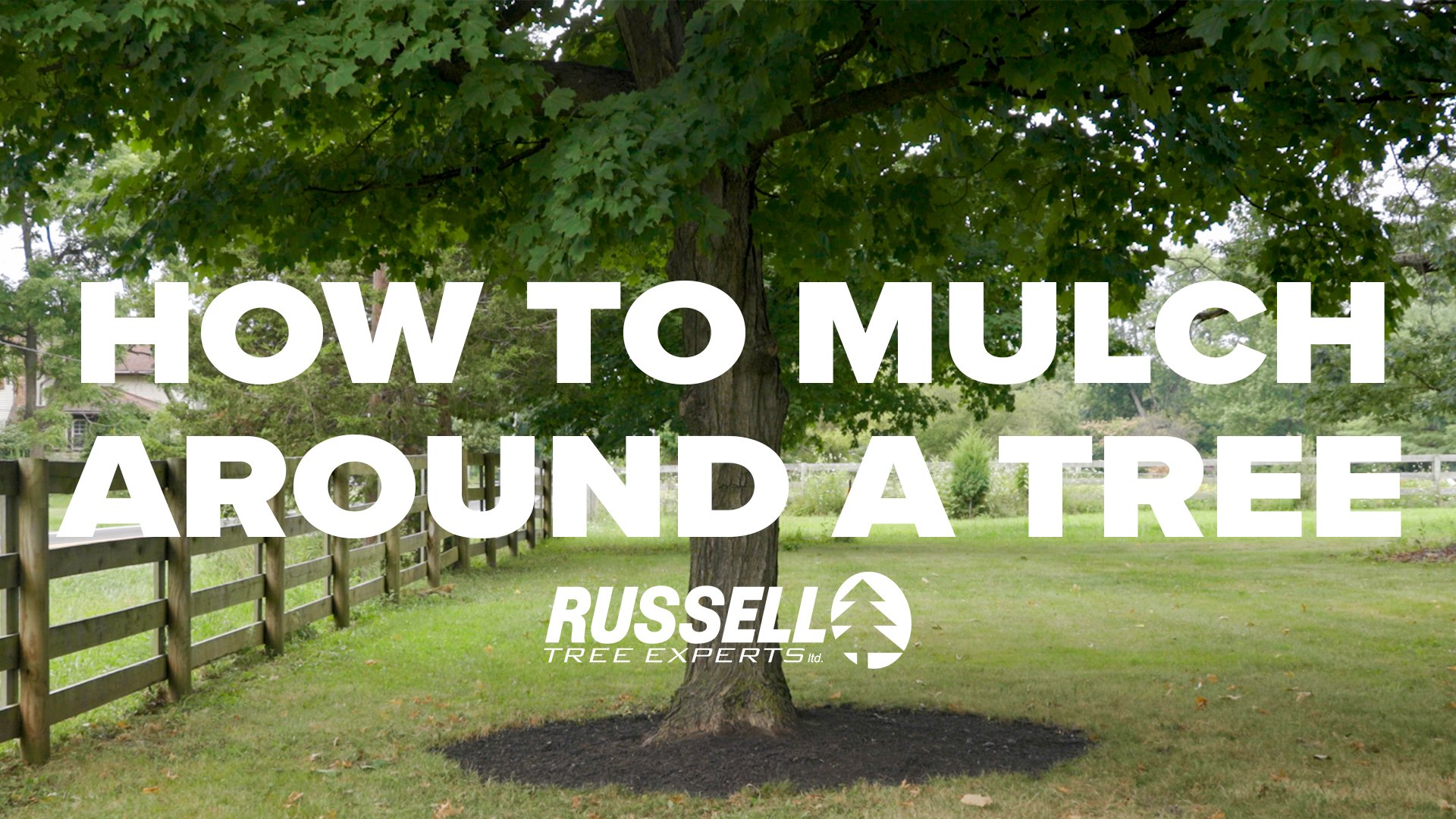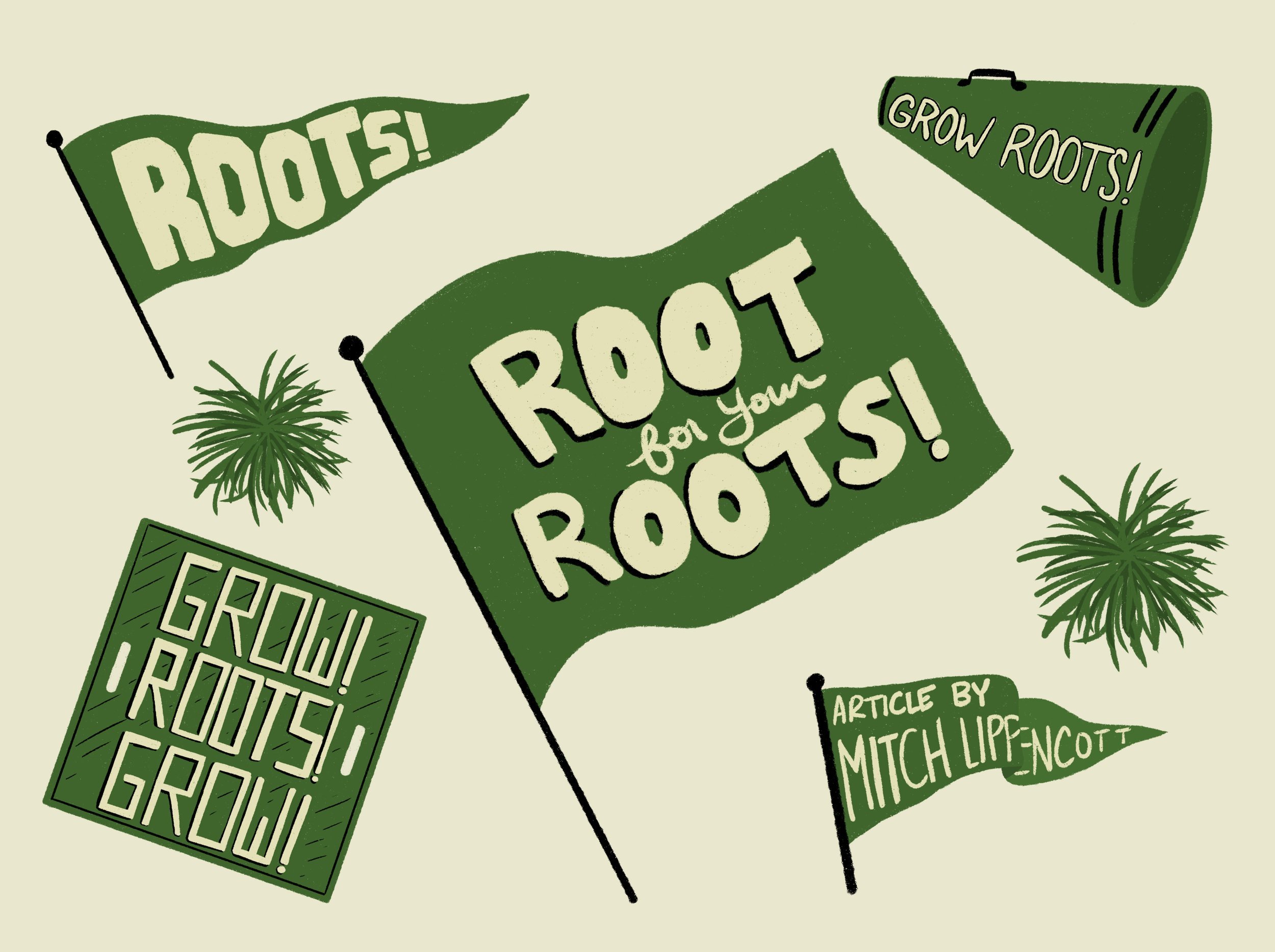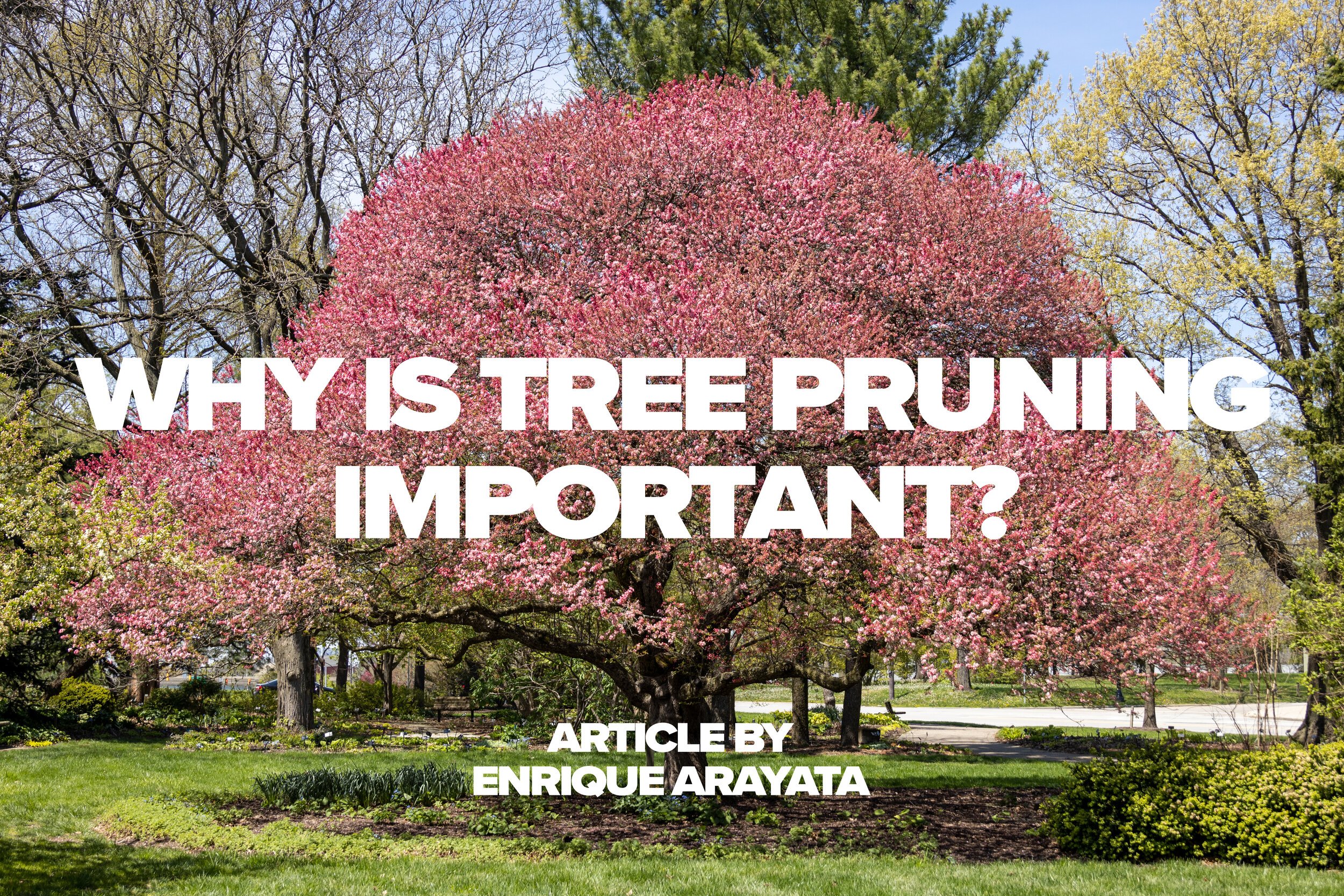By TJ Nagel
Board Certified Master Arborist®
March 27, 2024
Plant diseases love spring! As temperatures warm and tender new growth emerges, conditions are ideal for fungal pathogens to settle in and take up residence in our favorite trees. It is now when many plants are most susceptible AND treatable for fungal diseases, such as Dothistroma needle cast of Austrian pine, apple scab of flowering crabapple, Rhizosphaera needle cast of blue spruce, rust diseases on hawthorn and pear, and many others. So, rest easy as you see our tree wellness crews all over town arresting pathogenic perpetrators.
For this article, I want to focus on apple scab because it may be the most aesthetically devastating disease of ornamental trees and it is one of the most common diseases we see daily out in the field.
What is the disease and what does it do?
Apple scab is caused by the pathogen Venturia inaequalis. It is a common disease targeting the rose family of plants which includes crabapple, apple, pear, hawthorn, mountain ash, cotoneaster and pyracantha.
Apple scab produces lesions on leaves, flowers, fruit and on young succulent shoots. When infected areas are numerous, leaves can become curled and distorted and severe infections can lead to complete defoliation of trees and shrubs.
Several years of early leaf loss generally results in poor growth, reduced bloom and increased susceptibility to winter injury and insect predation.
images courtesy of OSU BYGL
How does the disease work?
Apple scab overwinters in fallen diseased leaves and in the soil. Disease development is favored by wet weather and cool temperatures that generally occur in central Ohio in the spring and early summer. Fungal spores are moved from the ground and carried to trees by raindrop splash and wind where they make their way to leaves, flowers, and fruit.
During wet periods, newly emerging crabapple leaves are extremely susceptible to infection. The longer the leaves remain wet, the more significant the infection can be. 10-20 days after initial infection, new spores are released which infect new leaves. Repeated infections can continue through the summer until environmental conditions become too hot and dry for the pathogen.
What can be done to protect my crabapples?
For most crabapple trees, fungicides must be applied preventatively to successfully manage apple scab. Fungicide sprays should begin when the first green leaves are emerging with additional sprays being applied in roughly two-week intervals. The number of fungicide applications needed can vary with weather conditions but generally, we recommend three separate applications.
Other cultural practices that can increase the effectiveness of fungicide applications when managing apple scab are:
Raking up and destroying infected fallen leaves to reduce locations where the apple scab pathogen can overwinter
Space crabapple trees generously to increase air circulation around trees
Prune out crossing limbs, vigorous upright sprouts, and suckers to increase airflow and sunlight penetration into the canopy (this can help foliage dry faster after rain or dew)
Avoid overhead irrigation, if plants need watering, apply water directly to the root zone. (Check out this article on best tree watering practices)
Additionally, much breeding and selection work has been performed within the nursery industry to introduce scab-resistant crabapples into the landscape. A short list of some of the most scab-resistant cultivars include:
‘Coralburst’,
‘Donald Wyman’
‘Prairifire’
‘Purple Prince’
‘Red Jewel’
‘Royal Raindrops’
‘Sugar Tyme.’
Also, selecting a tree that is not a member of the Rose family would be a guaranteed way to avoid apple scab.
Other common fungal diseases of trees that can be managed using fungicides include Oak Wilt, Dutch Elm Disease, Powdery Mildew, Black Knot, Anthracnose, and Verticillium wilt.
Remember, application timing is important and most fungal diseases of trees and shrubs are treated preventively. Treatments are far less likely to be effective when applied after the disease(s) has shown up. Tree disease diagnosis and treatment recommendations should be made by a professional arborist. Definitive disease identification may even require sending samples to a plant pathology lab. Russell Tree Experts will provide this service if needed or recommended.
If you have questions about fungal diseases of trees on your property, give us a call or request a quote online and we will send an ISA certified arborist to help!
ADDITIONAL TREE PRESERVATION ARTICLES!
Sincerely,
TJ Nagel I Scheduling Production Manager, Russell Tree Experts
TJ loves trees. He is an avid gardener and plant collector. TJ graduated from The Ohio State University with a B.S. in Agriculture with a major in Landscape Horticulture and minor in Entomology. TJ is an ISA Board Certified Master Arborist and well versed in Plant Pathology. TJ joined Russell Tree Experts in 2012.

